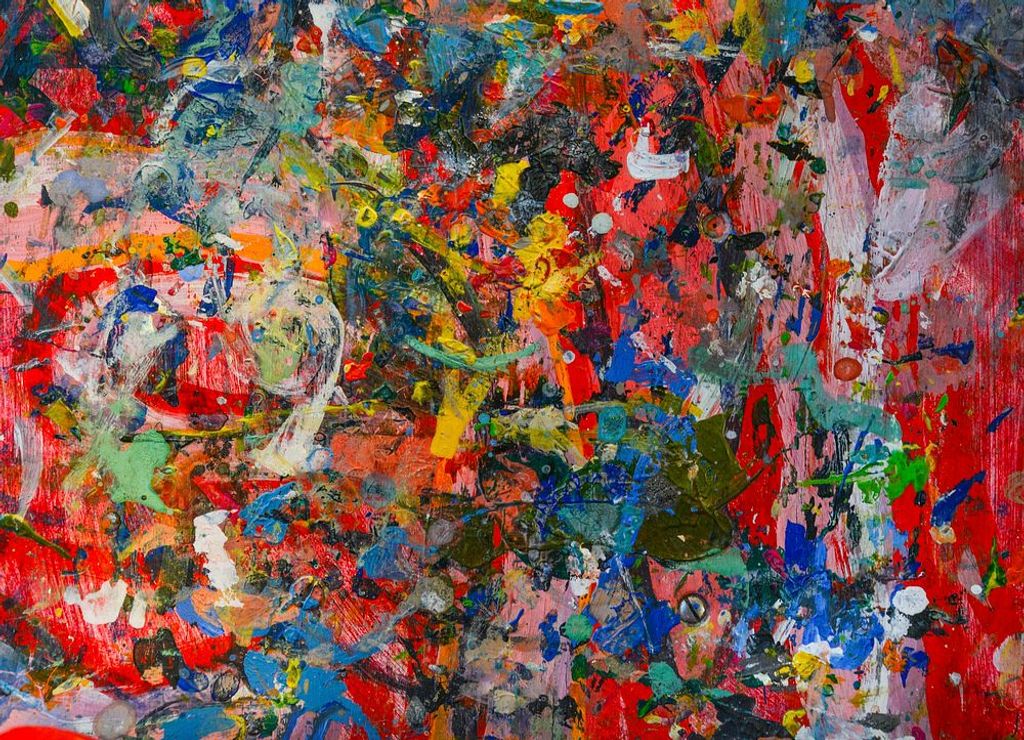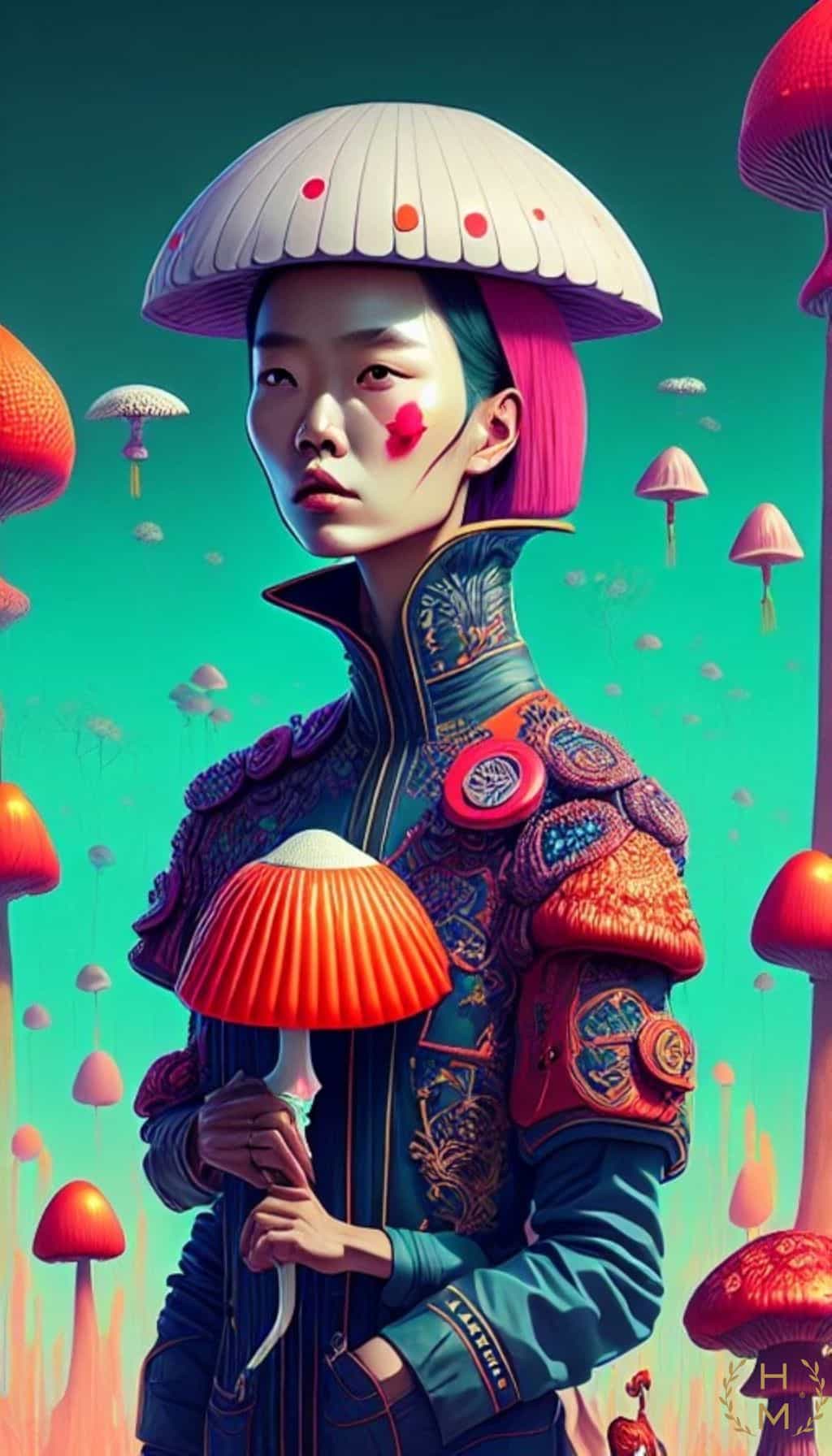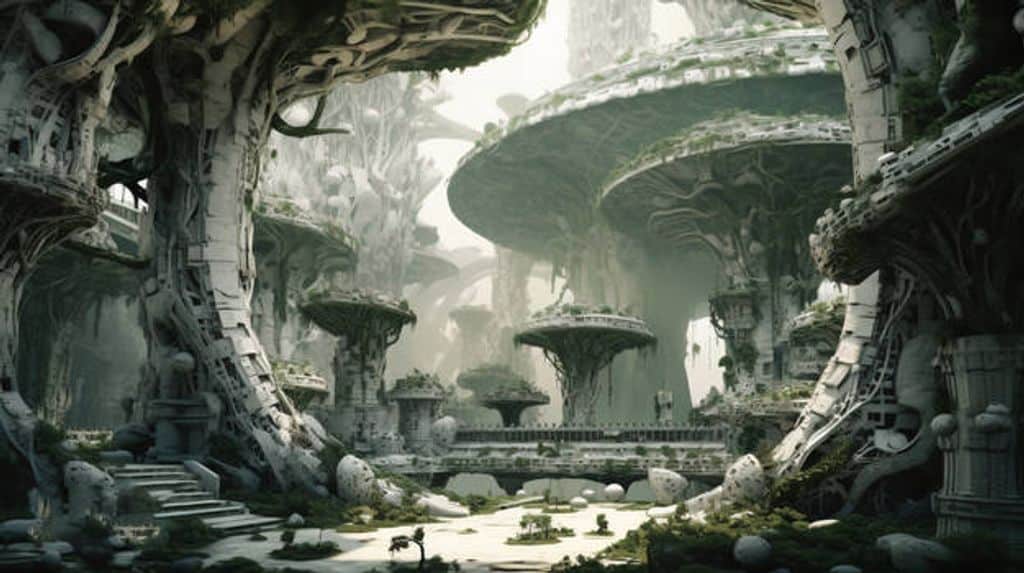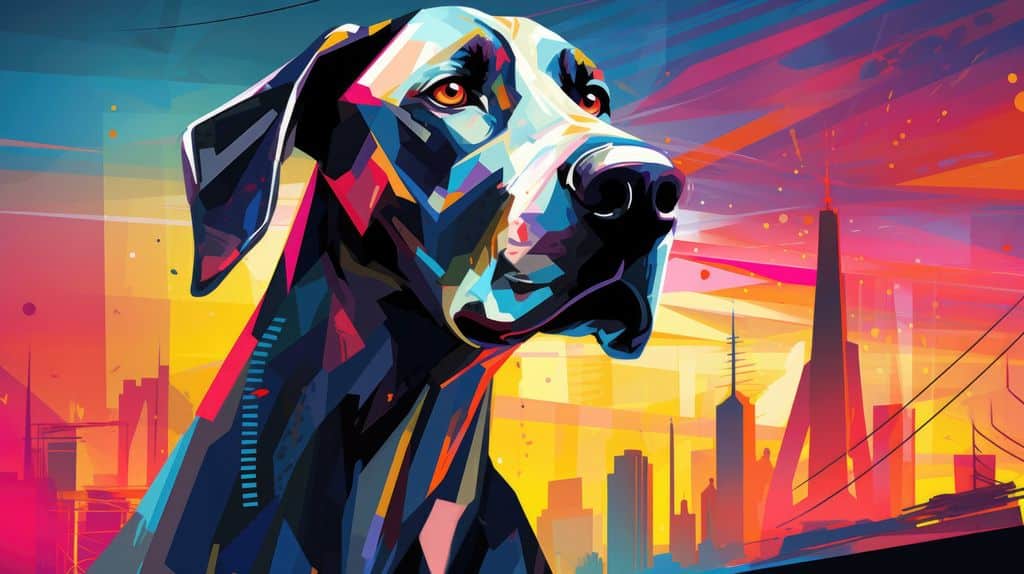The creative industries stand at a fascinating juncture where art meets technology. This convergence is not a mere trend but a fundamental shift that is redefining what it means to be a creative professional in the modern world. The future, undoubtedly, holds exciting prospects for those ready to embrace these changes and harness the full potential of digital tools in their artistic and business endeavors.
Table of Contents
ToggleKey Takeaways
- Digital art has revolutionized the creative industry, allowing artists to explore new possibilities and techniques.
- Freelance digital artists enjoy creative freedom and flexibility in their work, allowing them to express their unique vision and style.
- Collaboration with clients is crucial for freelance digital artists, as it helps them understand and fulfill the client’s vision and requirements.
- Managing multiple projects is a challenge for freelance digital artists, but effective time management and organization skills can help them stay on track.
- Marketing and self-promotion are essential for freelance digital artists to attract clients and build a successful career in the competitive creative industry.
The Evolution of Digital Art
From Traditional to Digital
The transition from traditional techniques, like hand-drawing and typesetting, to sophisticated digital platforms has been rapid and revolutionary. Designers have moved from the drawing board to the digital canvas, where the possibilities are virtually limitless. This change has not just been about efficiency; it has opened up new avenues for creativity and expression.
The Impact of Technology
In the ever-evolving landscape of art and design, technology has emerged as a pivotal force, profoundly reshaping how creative professionals work, think, and express their ideas. From the intricate layers of graphic design to the spatial complexities of architecture, digital tools are not just facilitators but catalysts of innovation. This article delves into the myriad ways in which these tools are influencing creative industries, offering a panoramic view of a sector at the crossroads of art and technology.
Digital Revolution in Graphic Design
The Dawn of a New Era
Graphic design, once a field that relied heavily on traditional mediums, has undergone a digital revolution. The advent of digital tools and software has revolutionized the design process, enabling artists to explore new possibilities and push the boundaries of creativity. With the ability to manipulate colors, shapes, and textures with ease, digital artists can create intricate and visually stunning designs that were once unimaginable. The digital medium has opened up a world of opportunities for graphic designers, allowing them to experiment, iterate, and innovate in ways that were previously limited by traditional methods.
Redefining Architecture with Technology
Building the Future
Architecture, a discipline that combines art and science, has also been transformed by technology. Digital tools have revolutionized the way buildings are designed, allowing architects to create more sustainable and innovative structures. With the help of computer-aided design (CAD) software, architects can visualize and simulate their designs in 3D, making it easier to communicate their ideas to clients and stakeholders. Additionally, digital tools have streamlined the design process, making it more efficient and accurate. From concept development to construction documentation, technology has become an integral part of the architectural workflow, enabling architects to push the boundaries of what is possible in building design.
The Synergy of Art and Technology
A Broader Trend
The intersection of art and technology represents a broader trend in the creative industries. As technology continues to advance, artists and designers are finding new ways to incorporate digital tools into their creative process. Whether it’s using virtual reality to create immersive experiences or harnessing artificial intelligence to generate unique designs, the synergy of art and technology is driving innovation and pushing the boundaries of creativity. This fusion of art and technology is not only reshaping the creative industries but also creating new opportunities for artists and designers to explore and experiment with their craft.
The impact of technology on the creative industries cannot be overstated. Digital tools have not only expanded the possibilities for artists and designers but have also democratized the creative process, making it more accessible to a wider audience. As technology continues to evolve, the role of a freelance digital artist will continue to evolve as well, requiring artists to adapt and embrace new tools and techniques. In this ever-changing landscape, the ability to harness the power of technology will be essential for success in the creative industry.
Digital Art in the Modern World
In the ever-evolving landscape of art and design, technology has emerged as a pivotal force, profoundly reshaping how creative professionals work, think, and express their ideas. From the intricate layers of graphic design to the spatial complexities of architecture, digital tools are not just facilitators but catalysts of innovation. This article delves into the myriad ways in which these tools are influencing creative industries, offering a panoramic view of a sector at the crossroads of art and technology.
- Implement a table for presenting structured, quantitative data. Ensure it’s succinct and formatted correctly in Markdown.
- Use a bulleted or numbered list for less structured content, like steps, qualitative points, or a series of related items.
The future, undoubtedly, holds exciting prospects for those ready to embrace these changes and harness the full potential of digital tools in their artistic and business endeavors.
In this digital era, the possibilities for artistic expression are limitless. Artists can now explore new mediums, experiment with innovative techniques, and reach a global audience with ease. The democratization of art through digital platforms has opened doors for aspiring artists to showcase their work and connect with like-minded individuals.
As technology continues to advance, the boundaries between traditional and digital art are blurring. Artists are pushing the boundaries of creativity by combining traditional art forms with digital tools, creating unique and captivating pieces that challenge the norms of the art world.
The impact of technology on the art industry goes beyond the creation process. Digital platforms have revolutionized the way art is consumed and experienced. Online galleries, virtual exhibitions, and augmented reality installations have transformed the way people interact with art, making it more accessible and immersive.
With the rapid pace of technological advancements, it is crucial for freelance digital artists to stay updated and continuously learn new skills. Adapting to different styles and genres, mastering digital tools and software, and understanding design principles are essential for success in this ever-evolving industry.
The role of a freelance digital artist in the modern world is not just limited to creating art. It also involves collaborating with clients, managing multiple projects, and marketing oneself to stand out in a competitive market. The freedom and flexibility that come with freelancing allow artists to explore their creativity and pursue their passion on their own terms.
As the digital art industry continues to grow, freelance digital artists have the opportunity to shape the future of art and make a significant impact on the creative industry as a whole. By embracing technology, honing their skills, and staying adaptable, freelance digital artists can thrive in this exciting and ever-changing landscape.
The Role of a Freelance Digital Artist
Creative Freedom and Flexibility
As a freelance digital artist, one of the greatest advantages is the creative freedom and flexibility it offers. Unlike working in a traditional studio or agency, freelancers have the ability to choose the projects they work on and the clients they collaborate with. This allows artists to explore their own artistic vision and style, and take on projects that align with their interests and passions. Additionally, freelancers have the flexibility to set their own schedule and work from anywhere, providing a greater work-life balance.
Collaboration with Clients
When collaborating with clients, it is important to focus on their needs and vision. Freelance work is about providing service to the client and solving their problems. Your work will be measured by how well you are able to meet their requirements. Additionally, consider using online job boards like the Wix Marketplace to jumpstart your freelancing career. These platforms offer opportunities to connect with clients and showcase your skills as a professional designer. It is also advisable to accept lower wage jobs initially to gain experience and build your portfolio.
Managing Multiple Projects
Managing multiple projects as a freelance digital artist can be challenging, but with the right strategies, it can also be highly rewarding. One important tip is to break down tasks into smaller, manageable chunks. This can make them less overwhelming and help you tackle multiple projects more efficiently. Start by identifying the key deliverables and deadlines for each project, and then prioritize your tasks accordingly. Additionally, it’s crucial to stay organized and maintain clear communication with your clients. Regularly update them on the progress of each project and address any potential issues or changes as soon as possible. By effectively managing multiple projects, you can maximize your productivity and deliver high-quality work to your clients.
Marketing and Self-Promotion
When it comes to marketing and self-promotion as a freelance digital artist, networking is key. Building genuine connections with peers and industry professionals can lead to valuable opportunities. Online classes, design contests, and communities are great networking platforms to explore. Additionally, utilizing social media platforms like Behance, Dribbble, and Vimeo can help showcase your work to a wider audience. Remember to focus on the client’s needs and vision when communicating, rather than solely highlighting your skillset.
Skills and Expertise
Mastering Digital Tools and Software
The graphic design landscape today is unimaginable without the digital tools that form its backbone. These tools have not only made design more efficient but have also pushed the boundaries of creativity. Software like Adobe Photoshop and Illustrator, and newer platforms like Sketch and Figma, have become staples in the designer’s toolkit. These applications offer unparalleled precision and versatility, enabling designers to execute complex ideas with relative ease. The influence of digital tools is evident in numerous iconic design projects. For example, the rebranding of a major tech company, which was entirely conceptualized and executed using digital tools, stands as a testament to the power of technology in graphic design. The project involved intricate designs that would have been nearly impossible to create without the aid of digital software, showcasing the blend of creativity and technology. In this digital era, graphic design has evolved into a more dynamic and inclusive field. As we advance, these digital tools are not only shaping how designs are created but also influencing the aesthetics and trends of the design world itself.
Understanding Design Principles
Design principles are essential guidelines that help digital artists create visually appealing and effective designs. These principles include balance, contrast, emphasis, unity, proportion, movement, repetition, rhythm, and white space. By understanding and applying these principles, digital artists can create designs that are visually balanced, engaging, and easy to navigate.
When it comes to design principles, balance refers to the distribution of visual elements in a design. It ensures that the design feels stable and harmonious. Contrast, on the other hand, involves using differences in color, size, and shape to create visual interest and make certain elements stand out. Emphasis is used to draw attention to specific elements or areas of a design, while unity brings all the elements together to create a cohesive and harmonious whole.
Proportion is about the size and scale of elements in relation to each other and the overall design. It helps create a sense of hierarchy and visual balance. Movement and repetition add dynamism and rhythm to a design, while white space provides breathing room and helps focus the viewer’s attention.
Incorporating these design principles into their work allows digital artists to create visually appealing and effective designs that communicate the intended message and engage the audience.
Adapting to Different Styles and Genres
Adapting to different styles and genres is an essential skill for a freelance digital artist. Each project may require a unique artistic approach, whether it’s creating a realistic portrait, designing a whimsical illustration, or developing a futuristic concept. Versatility is key in order to meet the diverse needs of clients and cater to various target audiences.
To effectively adapt to different styles and genres, a freelance digital artist can:
- Study and analyze existing artworks in the desired style or genre to understand the key elements and techniques used.
- Experiment with different artistic techniques and tools to expand their skill set and explore new creative possibilities.
- Collaborate with clients to gather specific requirements and preferences, ensuring that the final artwork aligns with their vision.
- Stay updated with the latest trends and developments in the art industry to stay relevant and offer fresh and innovative designs.
Tip: When adapting to different styles and genres, it’s important to maintain a balance between staying true to your artistic style and pushing boundaries to explore new artistic territories.
Continuous Learning and Skill Development
Continuous learning is crucial in the field of digital art. As the design world constantly evolves, it demands an ever-expanding skill set from artists. It is important to stay updated with the latest design techniques and trends. Attending graphic design workshops, taking online courses, and joining design communities are great ways to stay informed and improve your skills. Additionally, understanding the industries you’re designing for is essential. By continuously learning and adapting, you can ensure that your work remains relevant and impactful.
Challenges and Opportunities
Dealing with Client Expectations
A crucial aspect of managing client expectations as a freelance digital artist is to establish a clear contract that outlines each party’s obligations. This contract serves as a method of protecting your rights and preventing any unexpected surprises from arising during the project. It is important to include details about the work process in the contract, ensuring that both you and the client have a clear understanding of what to expect.
To effectively plan your work and streamline the design process, consider using mood boards. These visual tools can help you organize your ideas and present multiple optional designs to the client in the initial stage. It is recommended to present around three initial designs to provide the client with a range of options.
In addition, it is essential to specify the number of revisions you are willing to make. This helps prevent endless back-and-forth conversations and ensures that the project stays on track. By setting clear boundaries, you can avoid getting caught in a cycle of never-ending comments and changes.
Lastly, make sure that your contract protects your intellectual property rights. This ensures that you retain ownership of your work and prevents any unauthorized use or reproduction.
Payment terms should also be clearly agreed upon before starting a project. Include these terms in your invoice, with the standard being a 30-day payment period.
Managing Time and Deadlines
Managing time and meeting deadlines is crucial for freelance digital artists. With multiple projects and clients to juggle, it’s important to prioritize tasks and stay organized. Here are some tips to effectively manage your time:
- Prioritize and organize your tasks based on their importance and deadlines.
- Set realistic goals and deadlines for each project to ensure timely completion.
- Create a daily schedule to allocate time for different tasks and projects.
- Embrace time management techniques like the Pomodoro Technique to stay focused and productive.
- Limit distractions by creating a dedicated workspace and minimizing interruptions.
Remember, effective time management is key to delivering high-quality work and maintaining a healthy work-life balance.
Navigating the Competitive Market
Navigating the competitive market as a freelance digital artist can be challenging. With so many talented artists vying for the same opportunities, it’s important to find ways to stand out and showcase your unique skills and style. One effective strategy is to focus on personal branding. By creating a strong and memorable brand identity, you can attract the attention of potential clients and set yourself apart from the competition. Additionally, leveraging online job boards like the Wix Marketplace can provide valuable exposure and help you connect with clients looking for your specific expertise. Remember, it’s not just about creating beautiful designs, but also about understanding and solving your clients’ problems.
Exploring New Trends and Technologies
The creative industries are constantly evolving, driven by the intersection of art and technology. This convergence has led to exciting new trends and technologies that are shaping the future of digital art. One such trend is the rise of NFT Art on Demand, which allows artists to transform their creative visions into digital assets. This innovative approach has opened up new opportunities for artists to monetize their work and reach a global audience. Additionally, advancements in digital tools and software have revolutionized the way artists create and manipulate digital art, pushing the boundaries of creativity and expression. As the digital landscape continues to evolve, it is essential for freelance digital artists to stay updated with the latest trends and technologies to remain competitive in the industry.
Welcome to the Challenges and Opportunities section of Pro Digital Artists! At ProDigitalArtists.com, we are dedicated to providing top-notch digital art services. Whether you need stunning illustrations, captivating animations, or eye-catching designs, our team of talented artists is here to bring your vision to life. With years of experience in the industry, we understand the challenges that digital artists face and the opportunities that arise. We strive to stay ahead of the curve, constantly adapting to new technologies and trends. So why wait? Take your digital art to the next level with Pro Digital Artists. Visit our website today and explore the endless possibilities!
Conclusion
The role of a freelance digital artist in today’s creative industry is more important than ever. As technology continues to reshape the landscape of art and design, digital tools have become catalysts of innovation. Freelancers who embrace these changes and harness the full potential of digital tools are well-positioned to thrive in this evolving industry. From graphic design to architecture, digital tools are revolutionizing creative processes and empowering professionals to create stunning and impactful work. Additionally, financial management tools like paystub generators are essential for freelancers to manage their business effectively. The future holds exciting prospects for freelance digital artists who are willing to adapt and explore the endless possibilities that technology offers. It’s an exciting time to be a freelance digital artist in the creative industry.







